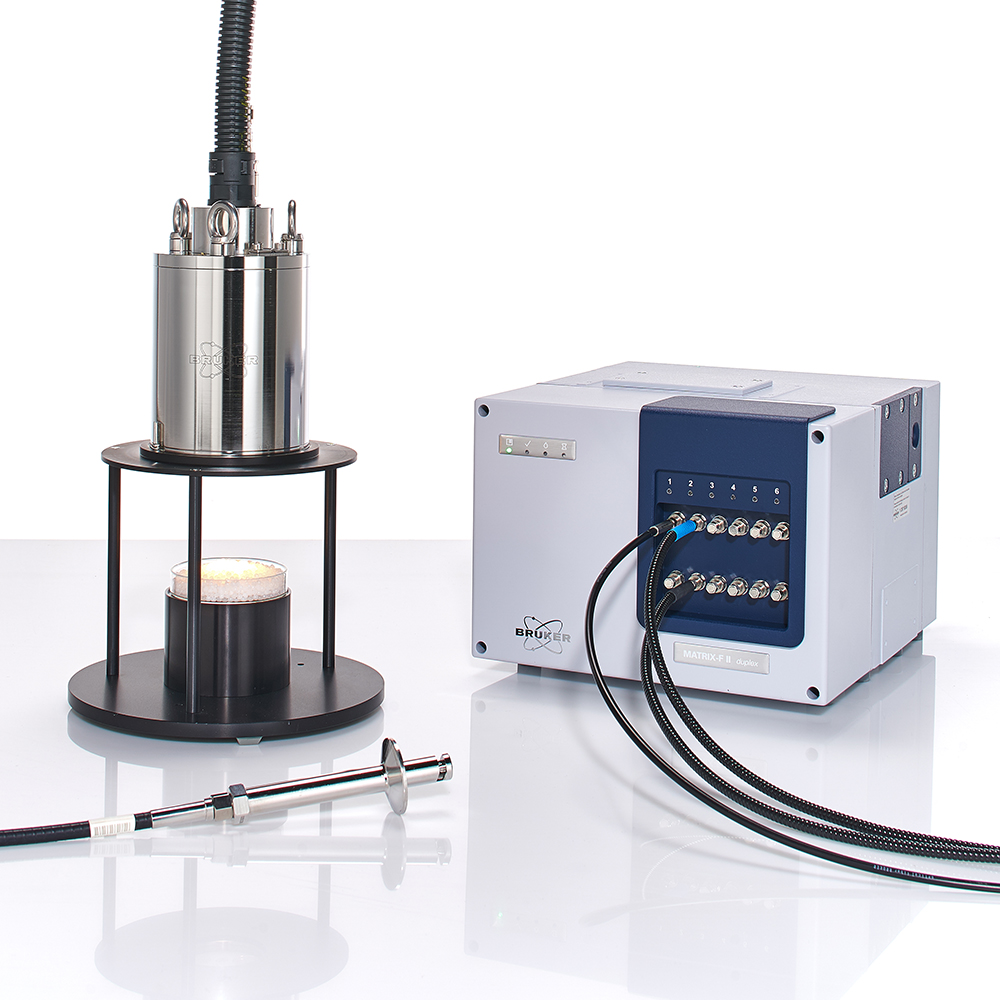

Pharmaceutical Industry
Validated Process Analysis in GMP-Environments
Use FT-NIR as a proactive tool for real-time quality assurance and product release in your Quality by Design (QbD) environment.
In order to comply with the strict GMP guidelines in pharmaceutical production, it is important to implement mechanisms to analyze and control pharmaceutical manufacturing processes and its critical process parameters as requested by the FDA by its process analysis technology (PAT) initiative.
Bruker supports its customers worldwide with proven solutions based on FT-NIR spectroscopy for applications from RTR testing (real-time release testing) of finished products like APIs to content uniformity of finished tablets.
Fully Validated FT-NIR Solutions
Bruker’s FT-NIR spectrometers are equipped with an automated filter wheel which houses standard materials and filters for testing instrument performance. Included in the OPUS software is OVP (Optics Validation Program), an instrument test program which executes a series of performance tests using the standards in the filter wheel. This program evaluates the instrument performance and determines if the spectrometer is operating within specifications.
OPUS fully supports the demands of the 21 CFR Part 11 regulation (Electronic Records, Electronic Signatures) issued by the FDA. Extensive user management with multiple security levels, non-editable data files and complete audit trails are some of the many features of this comprehensive spectroscopy software.
In addition, all Bruker products and services meet all quality standards, such as the ISO 9001 and ISO 13485, successfully audited by many pharmaceutical corporations.
The drying step is critical to ensure that the correct characteristics (moisture/solvent content) are controlled for the next step in the process. The standard operating methods to determine the moisture content, involves either stopping the process and thieving a sample for primary analysis or drying the product for a fixed period. Both do not provide a continuous monitor of the drying process and therefore do not provide the control necessary to optimize the product moisture.
FT-NIR spectroscopy in combination with an online diffuse reflectance probe enables a continuous monitoring the drying process. Filter driers can be modified to install measurement ports in the filter drier bowl into which the probes can be mounted. Depending on the amount of sample, the probe position can be adjusted.
For more information on monitoring the filter drying process with FT-NIR spectroscopy download our Application Note:


